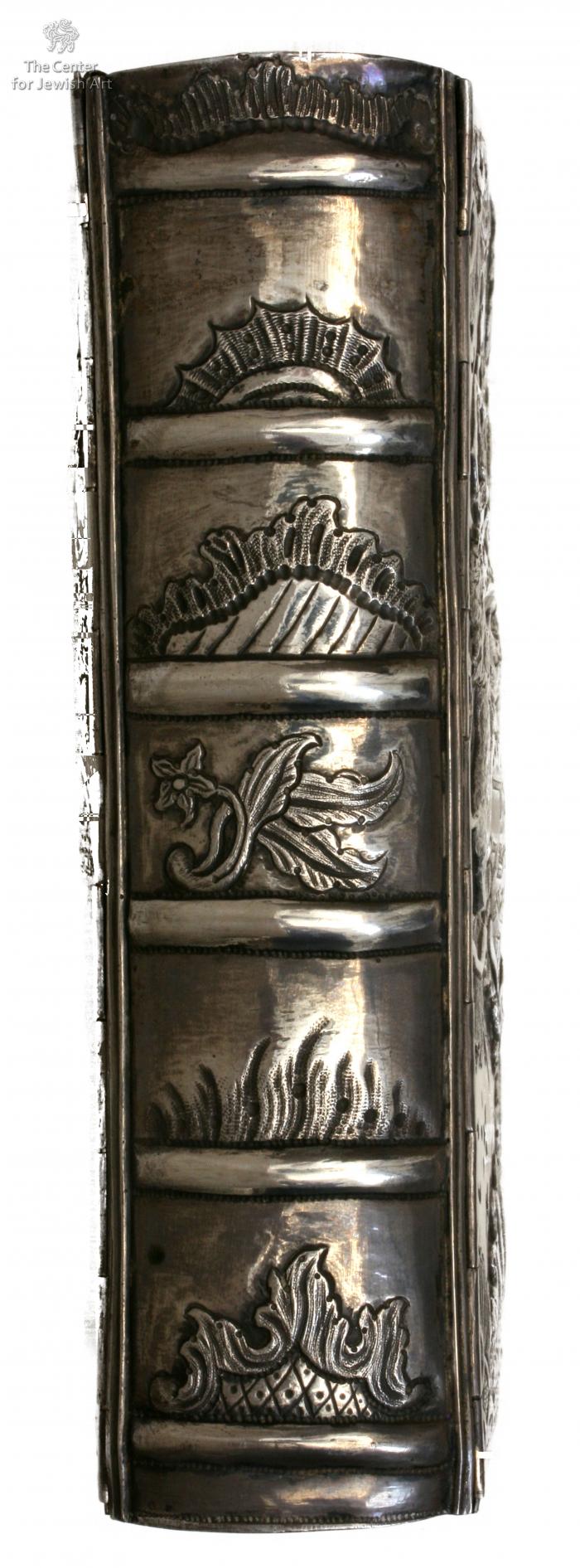Obj. ID: 3909 Book binding, Halberstadt, 1761

sub-set tree:
The following description was prepared by William Gross:
The bindings of Jewish books are generally quite simple, but there does exist a tradition, probably among the wealthier section of the population, of binding books in special and elegant ways utilizing a variety of material.
Silver book bindings are one of the most elegant objects of Jewish ritual art. The form is generally copied from Catholic and Orthodox Christian tradition where prayer books were often covered with silver bindings in keeping with the other elegant silver pieces used in the prayer service. As in many other areas of life, Jews emulated some customs from what they saw of their Christian neighbors. Since such a binding was an expensive purchase for an individual, such silver pieces are fairly rare. Their appearance is most widespread in Italy, but examples also exist from Germany, Poland, Ukraine, Austria and even the Ottoman Empire.
One of the rarer Jewish ritual objects in Germany is the silver book binding. They usually contained prayer books and were often given as gifts between the bridal couple. This beautiful silver binding containing a siddur was made as a gift for Rabbi Yehudah Leib Eiger (1741-1814), the uncle of the famous Rabbi Akiba Eiger. This was a gift from his wife Hendel, probably on the occasion of their marriage. At the time of the marriage Yehudah was 20 years old.
Inscription: Front: Rabbi Leib, son of the genius, head of the rabbinical court, our teacher, the Rabbi Akiva Eiger, the righteous, of blessed memory Back: Hendele, the daughter of our teacher, the Rabbi Itzik, may his rock protect and sustain him, (5)521, (1761), according to the minor reckoning




















